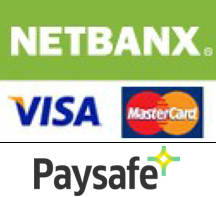‘Start by taking a breath in anywhere you like and then breathe out just to settle yourself on the mat. Feel the weight of your ribcage, your head and your pelvis on the mat and let them weigh heavy. Maybe start to slowly rock your pelvis forward and back and feel the weight move, not forcing any part of your back down into the mat. Let the weight settle towards the tailbone, making sure that you don’t feel the need to jam your lower back down into the mat. Whenever you are ready, take a breath in and then on your exhale, start to lengthen through the legs, pressing away and then returning the carriage home, widening through the sit bones as you do’.
If you’ve come to any of our Pilates classes, you will have heard us say a version of the above and as we work deeper into the class and come to the more challenging exercises in terms of strength and flexibility, we will cue you to get the most out of your core, we’ll ask you to lengthen and to sit tall, to be aware of where you are moving from and what muscles are moving you but you will never hear us ask you to squeeze your abs. Actually, it is important that you avoid squeezing or clenching or gripping anywhere in your body. We want lots of free, fluid movement, we want your spine to feel fluid and juicy and lengthened, not even stiffer from gripping your abs around it!
‘WAIT!’, I hear you cry! ‘But I thought Pilates was all about pulling your belly button in and hollowing out your abs and then staying ‘engaged’ forever! I thought that was supposed to make my back stronger?!’ Well, the theory came from a group of Australian researchers who looked at patients with low back pain and those with ‘healthy’ backs. They found that in healthy individuals, the TVA (transversus abdominis – the corset type muscle that wraps around your midsection) would activate a fraction of a section before movement and in patients experiencing low back pain, there was a delayed response in the TVA activation. The theory then followed that those people experiencing low back pain should ‘draw their abs in’ before they moved, to engage the TVA which would then help to stabilise the spine. Which all sounds well and good, except for a couple of things.
As we always remind you, your core is not just your abs! It includes the muscles in the front of the truck (including the 6 pack and the obliques and the TVA) but also the muscles in the pelvic floor and lots of muscles at the back of the trunk. Our muscles work in groups and a strong and functional core is so much more than ‘strong abs’, you cannot have a strong core just by having a strong TVA, in fact, if we focus on just strengthening this muscle, it can cause the other muscles of the trunk to become weaker and the cycle continues!
For patients with a sore elbow for example, we would never ask them to contract their bicep before attempting the bend their elbow, in theory, it could make sense but in practice it would not be helpful. For most patients with low back pain, asking them to hollow out their abs or pull their belly button to their spine before they move is equally unhelpful. In fact, lots of people that we see with lower back pain are already unconsciously ‘gripping’ their core as a guarding mechanism or protective instinct, which then cause the muscles to feel even tighter. This is why we encourage you to let go a little bit and to focus on moving your bones and feel the muscles move around them. We work your core by challenging your pelvic stability and the connection between your ribs and your hips and your shoulder blades.
We like to work as efficiently as possible – do as much as you have to and as little as you can get away with. You don’t need to have your abs completely hollowed out the second you walk in the door of the studio; that’s not functional and you wouldn’t do it in the rest of your life anyway. Listen to cues that allow your body to move freely in class, let full breaths in expand the ribcage and deep breaths out relax the body. Movement, as opposed to squeezing muscles, is what really heals.


